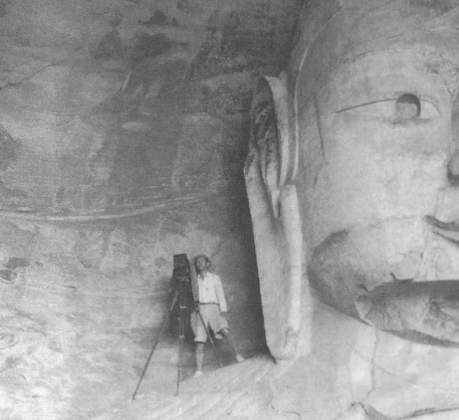
Hadachi Osamu at work in Yungang, Cave 19. 1939; Photo in Nagahiro Toshio, Unkō nikki Taisenchu no bukkyo sekō chiyōsa, 雲岡日記:大戰中の仏教石窟調查 (Yungang Dairy: War-time Expeditions to Buddhist Grottoes), Tokyo: NHK Press, 1988.
807 Schermerhorn Hall
RSVP: mo2486@columbia.edu
This paper examines the Mizuno Nagahiro mission to the Yungang Grottoes between 1938 and 1945, focusing on not only the photographs that the Japanese team produced, but also their photographic process in both the context of war and the history of expeditionary photography. The Japanese mission, I argue, was groundbreaking in its understanding and practice of expeditionary photography as veneration and as agent reenacting the iconicity of sacred images. In turn, this mode reminds us of the role that photographic mediation plays in art historical studies, while also demonstrating an alternative ontological understanding of the photographic medium in general.
